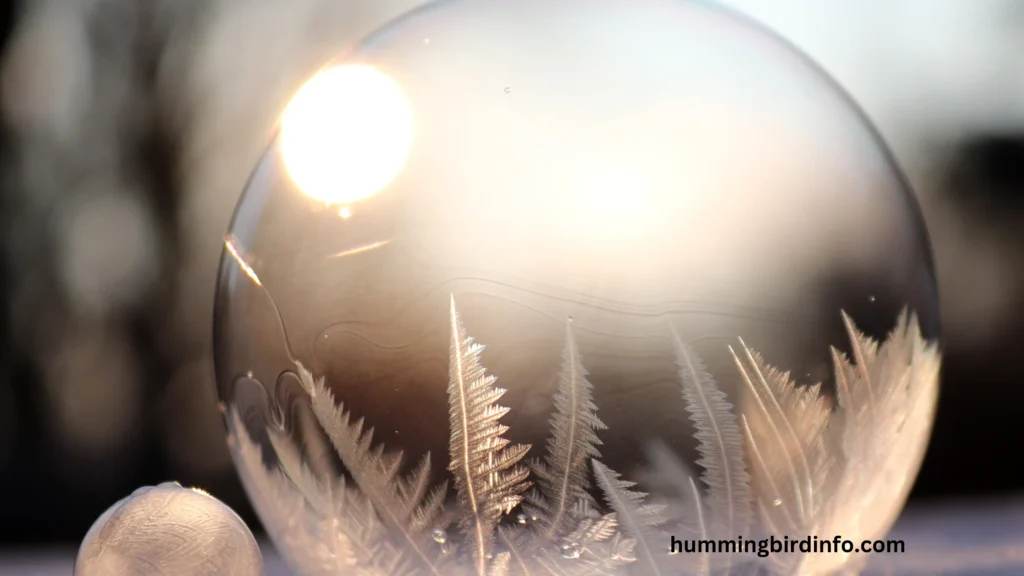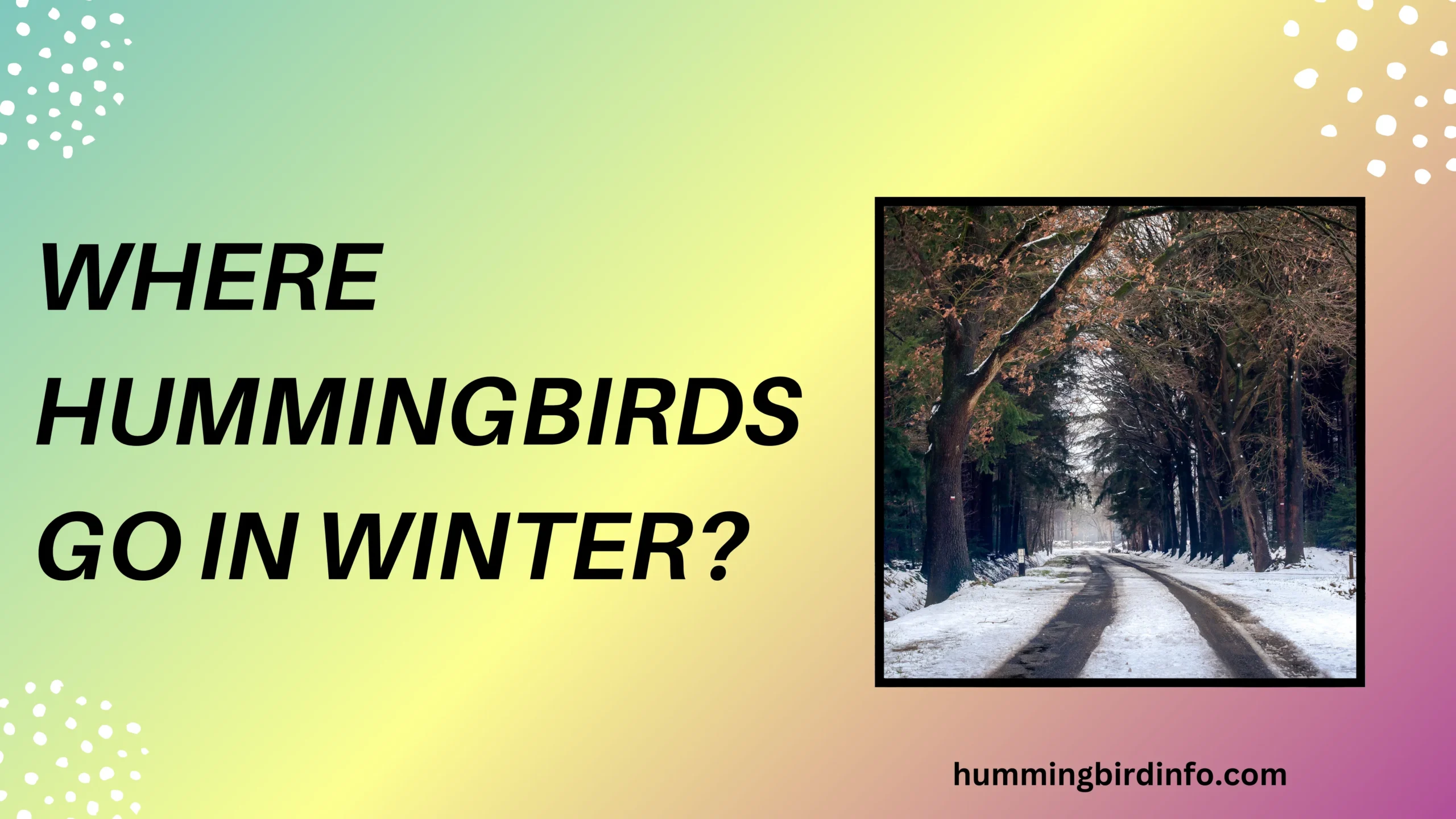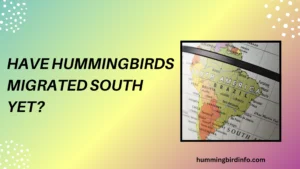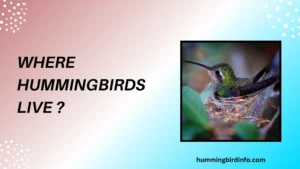As autumn fades into winter, something strange begins to happen in our gardens. The air grows still, and the vibrant flashes of emerald and ruby that once darted between blossoms suddenly vanish.
The buzzing acrobats of summer—the hummingbirds—seem to disappear without a trace, leaving behind only silence and curiosity.
But where do these tiny, brilliant creatures go when the cold sets in? Their absence is not merely a seasonal quirk—it is part of a vast migratory journey shaped by survival, instinct, and ancient rhythms of the earth.
Understanding their winter destinations opens a window into the complexity of nature’s design and the incredible resilience of birds that weigh less than a coin but travel thousands of miles.
This blog post explores the mystery of where hummingbirds go in winter, the challenges they face, and the adaptations that guide them.
Whether you’re a backyard birder or a nature lover, knowing their winter story helps us appreciate not just their summer presence but their extraordinary life cycle year-round.
Contents
- 1 The Great Departure – Why Hummingbirds Migrate
- 2 North American Migrants and Their Southern Destinations
- 3 The Richness of the Neotropics – A Winter Paradise
- 4 What Determines Their Wintering Grounds?
- 5 The Journey South – Facing the Challenges
- 6 Conclusion:
- 7 FAQ’s
- 8 1. Do all hummingbirds migrate in winter?
- 9 2. Where do Ruby-throated Hummingbirds spend winter?
- 10 3. Can hummingbirds survive cold weather?
- 11 4. What do hummingbirds eat in winter?
- 12 5. Why is migration risky for hummingbirds?
- 13 6. Are hummingbirds alone during winter?
The Great Departure – Why Hummingbirds Migrate
Hummingbirds are migrants by necessity, not by choice. As soon as temperatures dip, their main sources of food—nectar-producing flowers and insects—start to disappear. These tiny birds have extremely high metabolisms, meaning they must eat frequently to survive.

They cannot withstand freezing weather for long periods, even though they can enter torpor, a short-term hibernation-like state. Torpor helps them save energy at night, but it’s only a temporary fix—not a substitute for a warm environment.
Over generations, hummingbirds evolved to follow the flowers. Their migration patterns are deeply embedded in their biology, allowing them to take advantage of abundant resources in the north during summer, then retreat to the south to survive winter’s scarcity.
North American Migrants and Their Southern Destinations
The Ruby-throated Hummingbird, the most widespread in eastern North America, embarks on a grueling journey across the Gulf of Mexico, flying nonstop for up to 18 hours. Their winter home lies in Central America, particularly in Mexico, Belize, and Guatemala.
The Rufous Hummingbird, famous for its fiery orange color, breeds in Alaska and western Canada. Each fall, it travels south to Mexico, navigating vast distances and diverse ecosystems, from mountains to coastal forests.
Other North American species also head south: the Black-chinned Hummingbird winters in Mexico; the Calliope Hummingbird and Broad-tailed Hummingbird migrate to Central America and the southwestern U.S. Their destinations may differ, but all seek reliable food and warmth.
Interestingly, Anna’s Hummingbird defies this norm. It often stays along the Pacific Coast year-round, adapting to colder climates by relying on winter-blooming plants and human-provided feeders. This makes it one of the few partially resident species in North America.
The Richness of the Neotropics – A Winter Paradise
Central America is a hummingbird haven, hosting both migrants from the north and resident tropical species. The diversity of rainforests, cloud forests, and coastal lowlands provides a buffet of blooming plants even during winter.
Mexico alone offers a wide range of wintering habitats. From arid deserts with seasonal blooms to humid mountain forests, its variety allows hummingbirds to find food and shelter tailored to their specific needs.
South America, where hummingbirds first evolved, remains home to hundreds of species that don’t migrate at all. These birds thrive in stable environments like the Amazon, Andean valleys, and Patagonian scrublands, where food remains available year-round.
However, when migrants arrive, they may find themselves competing for nectar with resident species. Despite their small size, hummingbirds are known for their territorial aggression, and winter competition can be fierce.
What Determines Their Wintering Grounds?
The most critical factor for hummingbirds in winter is food availability. They follow the blooms of specific plants, many of which flower during the dry season in tropical regions. These plants often evolved alongside hummingbirds, forming mutual partnerships.
Climate and temperature also matter. Hummingbirds need mild, frost-free conditions to avoid hypothermia. Cold snaps can be deadly if food is also scarce, which is why they rarely risk staying in places with harsh winters.
Equally vital is habitat quality. Many wintering regions face deforestation, urban development, and agriculture expansion. When habitats shrink, so do the birds’ chances of finding enough food to survive.
They also require clean water sources for hydration and bathing, which helps maintain feather health. Additionally, their small size makes them vulnerable to predators like snakes, spiders, and hawks in their wintering territories.
The Journey South – Facing the Challenges
Migration takes a toll. Before leaving, hummingbirds consume up to twice their body weight in food daily to store fat reserves. These reserves power their non-stop flights over seas and deserts.
How they find their way is still being studied. Hummingbirds are believed to use celestial navigation, earth’s magnetic fields, and visual landmarks. Their internal compass is one of nature’s great marvels.
Stopover sites play a vital role in their survival. These are places where hummingbirds rest and refuel during migration. Destroying these habitats through development or farming can disrupt their entire journey.
Weather remains a major threat. Sudden cold fronts, strong winds, or tropical storms can lead to exhaustion or death. Hummingbirds are hardy, but their small size gives them little margin for error.

In colder wintering areas, they may once again use torpor. This strategy helps them survive brief food shortages or cold nights, but they rely on migration, not torpor, as their main defense against winter.
Conclusion:
Hummingbirds do not vanish in winter—they simply move on. From the Gulf of Mexico to the cloud forests of Central America, they follow an ancient path shaped by climate and survival.
Their journeys remind us how fragile and connected our ecosystems truly are. When we protect hummingbirds’ winter homes, we ensure that they return each spring to brighten our gardens.
In every beat of their wings is a story of adaptation, endurance, and wonder. By learning where they go in winter, we better understand how to protect these winged miracles all year long.
FAQ’s
1. Do all hummingbirds migrate in winter?
No, not all do. While most North American species migrate, others like Anna’s Hummingbird stay put in milder coastal climates.
2. Where do Ruby-throated Hummingbirds spend winter?
They winter in Central America, mainly in Mexico, Belize, and Guatemala, after flying over the Gulf of Mexico.
3. Can hummingbirds survive cold weather?
Only for short periods. They use torpor to survive cold nights, but they cannot tolerate freezing temperatures long-term.
4. What do hummingbirds eat in winter?
They feed on nectar from tropical plants, insects, and sugar water from feeders in warmer areas.
5. Why is migration risky for hummingbirds?
They face exhaustion, bad weather, predators, and the loss of critical stopover habitats.
6. Are hummingbirds alone during winter?
Not at all. Wintering grounds host many species, leading to competition and fascinating interactions with resident birds.








